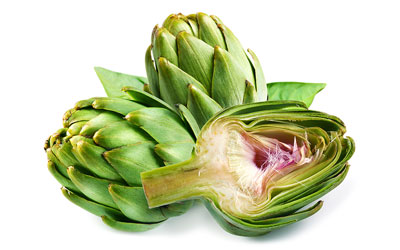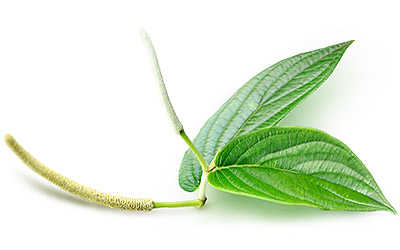Cacao - or cocoa - is a South American native internationally renowned for its integral role in one of the world's best loved foods. Nowadays, people across the globe keep cacao in their kitchens in one form or another, and while it is traditionally praised for its flavor, there has recently been renewed attention paid to its unique nutritional and medicinal potential.
Cacao Medicinal Properties
- Medicinal action Stimulant, Vasodilator
- Key constituents Theobromine, anandamide
- Ways to use Capsules, Hot infusions/tisanes, Powder
- Medicinal rating (2) Minorly useful plant
- Safety ranking Use with caution
Health Benefits of Cacao
The combined action of cacao beans' alkaloid content gives it stimulant, antioxidant, and antitussive properties, which can be used to improve human health. Cacao is more commonly used for:
Increasing energy levels. The stimulating effect of cacao is due to its vasodilating action, which increases blood flow.
Improving mood. Cacao is thought to increase serotonin levels in the brain, which translates into a feeling of relaxation and well-being.
Additional benefits of cacao are:
Lowering blood pressure. The flavonols found in cacao dilate blood vessels and in doing so decrease blood pressure.
Reducing cardiometabolic risks. Several studies have shown that cacao can benefit overweight adults by helping regulate cholesterol levels, blood sugar, body weight, and waist circumference.1
Inhibiting compulsive or long-term coughing. The key compound theobromine is thought to block the action of the sensory nerves and in doing so halt the cough reflex.
- Reducing the effects of photo-aging. A study has found that daily consumption of cacao improves skin wrinkles and elasticity in photo-aged women.2
Studies have also found that eating high antioxidant cacao positively affects behaviors in children with autism.3
How It Works
Cacao's main active compound is theobromine, an alkaloid found abundantly in the plant's beans and seeds. The compound is responsible for much of the plants stimulant and mood-enhancing effects.4,5
Theobromine acts in a similar way to caffeine, as an antagonist to adenosine receptors, in order to enhance energy levels and dilate blood vessels.6 However, unlike caffeine, the bromine and polyphenols seem to stimulate the brain's reward mechanism more strongly.7 A link to serotonin production has been proposed, although it remains unproven.
Other herbs with stimulant properties are coffee, ginseng, guarana, macambo, and tea plant, particularly its green tea variety.
Cacao Side Effects
For most people, taking cacao in moderate amounts is generally safe. However, cacao may also cause allergic skin reactions, migraines, and digestive complaints.
Cautions
Raw cacao paste products should not be consumed in large amounts by those with bleeding disorders, anxiety, diarrhea, or by women who are pregnant or breastfeeding.
People with diabetes, Gastroesophageal Reflux Disease (GERD), or irregular heartbeat should also be cautious when consuming cacao.
Additionally, those with heart conditions, diarrhea, glaucoma, high blood pressure, Irritable Bowel Syndrome (IBS), or osteoporosis should be wary of the caffeine found in cacao.
Cacao Nutrition
The nutritional value of cacao is rounded by minerals. It is an excellent source of copper, a trace element whose deficiency is now more frequently recognized, and may be an underlying cause of many cases of anemia and neutropenia. Copper is important for the creation of new red blood cells, as well as for the health of blood vessels, nerves, immune system, and bones.
Cacao beans are also a good source of manganese, which is a mineral involved in bones' formation, as well as in the metabolism of fats and carbohydrates. Magnesium is also present in fair amounts in cacao, along with small quantities of other minerals, such as zinc, iron, potassium, selenium, and calcium.
Raw, unprocessed cacao is also an adequate source of dietary fiber, which allows for a proper metabolism of sugars and also improves digestion.
15 grams of raw, organic cacao nibs provide 99 calories, as well as 13% and 7% of the daily value for fats and dietary fiber, respectively.

How to Consume Cacao
- Edible parts Seed
- Edible uses Flavoring, Beverage
- Taste Aromatic, Mildly bitter
Natural Forms
- Raw paste. Cacao paste is the main ingredient in chocolate bars, which can vary in their nutritional value. The higher the percentage of dark chocolate, the more antioxidant capabilities it has.
Dried. Naturally sun-dried, cacao nibs can be consumed with cereal, smoothies, and desserts, and they are a great source of antioxidants, as well as essential amino acids.
Infusion. A warm tisane can be brewed using cacao nibs or husks for a mild energy boost, due to its theobromine content.
Powder. Cacao powder, or cocoa, is used in desserts, yogurt, and smoothies for a added flavor, energy value, and nutrition.
Herbal Remedies & Supplements
- Butter. In addition to being used in desserts, cocoa butter may be used as an alternative substance for relieving chapped lips.
Capsules. Many capsules are processed to have a lower fat content than raw cacao products and provide more antioxidant and cardiovascular benefits.
Growing
- Life cycle Perennial
- Harvested parts Seeds, Fruit
- Light requirements Partial shade
- Soil pH 6.1 – 6.5 (Slightly acidic)
- Growing habitat Tropical rainforests
Native of the Amazon rainforests, the cacao or cocoa is now cultivated in the hot and humid forests of Africa, Central America, South America, Asia, and Oceania. This economically important crop requires similarly warm, humid conditions to grow adequately in different latitudes.
Growing Guidelines
Cacao plants are propagated by seeds, which are first sown in a nursery bed or in baskets. Once the seedlings are strong enough, they can be transplanted outside.
Cacao or cocoa plants should be grown in temperatures ranging between 70 - 86°F (21 - 30°C) in slightly acidic soil.
Partial to full shade is ideal for cacao to develop properly.
They need plenty of water, and a warm, humid environment in order to thrive.
Additional Information
- Other uses Cosmetics
Plant Biology
Theobroma cacao, also known as cocoa, is native to the Central and South American rainforests. With a standard height of 20 - 26 feet (6 - 8 m), some trees can reach up to 46 feet (14 m). The cacao leaves, which start reddish and become dark green, are 5 - 24 inches (12 - 60 cm) long by 2 - 8 inches (4 - 20 cm) wide. The vertical cacao branches, with leaves arranged in spirals around the stem, eventually produce multiple lateral branches with leaves growing on opposite sides of the stem.
The flowers of cacao can be greenish-white, yellow, or red in color, and grow from leaf scars on the trunk and main branches. The fleshy fruit of the cacao tree, which grows 4 - 12 inches (10 - 30 cm) long, starts as a green pod and changes progressively from yellow to red as it matures, containing 30 - 60 seeds covered with white mucilage, which are 1 - 2 inches (2 - 4 cm) long by 0.4 - 1.0 inches (1 - 2 cm) wide.
Classification
The Theobroma cacao tree is an evergreen member of the Malvaceae family, which is comprised of around 2,300 species, many of which are flowering plants. Notable members of this large group, also known as the mallow family, are baobab (Adansonia digitata), hibiscus (Hibiscus sabdariffa), and marsh mallow (Althaea officinalis).
Subspecies and Cultivars of Cacao
Botanists have identified 10 subspecies of cacao that are largely based on region. These include amelonado, contamana, criollo, curaray, guiana, iquitos, maranon, nacional, nanay, and purus.
These subspecies, very similar but with unique genetic characteristics, have been categorized within four cultivars: 'Criollo', 'Forastero', 'Trinitario', and 'Nacional'.
'Criollo' beans are flavor rich, with reduced levels of sugars and amino acids, which make them particularly aromatic when compared with 'Trinitario' and 'Forastero', both with lower levels of flavonoids. However, 'Trinitario' has a characteristic wine-like scent that distinguishes it from other varieties, and 'Nacional' has the lowest level of sugars after the fermentation process.
Historical Information
Researchers believe that cacao was first domesticated in the tropical rainforests of South or Central America around 1500 BCE, although the exact date is uncertain. From the very beginning, however, it was prized for its ability to improve energy, focus, swiftness, and responsiveness, as history reports that it acquired ritual and religious uses fairly early on after its discovery.
After the European colonization of the Americas, cacao was brought to Europe by the Spanish and popularized as a sweet, hot drink. Its cultivation was then promoted throughout Asia and Western Africa from the 1700s onward.
Economic Data
The economic importance of cacao is constantly growing as demand increases from both established and developing markets. The main use of cacao is in the chocolate industry for culinary purposes. Despite this, there is also growing interest in the medicinal advantages of eating or drinking cacao beans. As it stands, more than 3 million tons of cacao beans are produced every year, with the Ivory Coast (responsible for over 37% of the world's supply) currently being the biggest producer. The Netherlands is the biggest importer of cocoa powder, purchasing $220 million USD each year.
Other Uses
Cocoa butter is found in some pharmaceutical products, makeup, and soap.
Sources
- Food and Agriculture Organization (FAO), Corporate Document Repository, Cocoa, Growing Cocoa
- Food Chemistry, Nutritional composition and fatty acids profile in cocoa beans and chocolates with different geographical origin and processing conditions, 2015
- International Cocoa Organization, Growing Cocoa
- Journal of Cardiovascular Pharmacology, Cocoa, chocolate, and cardiovascular disease, 2009
- Journal of Clinical Biochemistry and Nutrition, Procyanidins in Theobroma cacao Reduce Plasma Cholesterol Levels in High Cholesterol-Fed Rats, 2009
- Journal of the American College of Nutrition, Chocolate: food as medicine/medicine as food, 2001
- Journal of the Federation of American Societies for Experimental Biology, Theobromine inhibits sensory nerve activation and cough, 2004
- Nutrients, Chocolate in History: Food, Medicine, Medi-Food, 2013
- Processing and Impact on Active Components in Food, p. 606
- U.S. Botanical Garden Conservatory, Cacao seed pods
- University of Hawaii, Cacao (Theobroma cacao) Food of the Gods
- Encyclopedia of Herbal Medicine, p. 276
- FAOSTAT, Cocoa, beans 2011
- Journal of Medicinal Food, Evaluation of antiradical activity of different cocoa and chocolate products: relation with lipid and protein composition, 2014
- Medicinal Plants of the World, p. 429
- Germplasm Resources Information, Taxon: Theobroma cacao L.
- JAMA Internal Medicine, Mood food: chocolate and depressive symptoms in a cross-sectional analysis, 2010
Footnotes:
- Revista Mexicana de Cardiología. (2015). Beneficial effects of a flavanol-enriched cacao beverage on anthropometric and cardiometabolic risk profile in overweight subjects. Retrieved May 11, 2021 from https://www.medigraphic.com/cgi-bin/new/resumenI.cgi?IDARTICULO=58908
- The Journal of Nutrition. (2016). Cocoa Flavanol Supplementation Influences Skin Conditions of Photo-Aged Women: A 24-WeekDouble-Blind, Randomized, Controlled Trial. Retrieved May 11, 2021 from https://academic.oup.com/jn/article/146/1/46/4585665
- Integrative Medicine. (2018). A Pilot Study: Parent Perceptions of Behavior Change in Their Child with Autism Spectrum Disorders Following High Antioxidant Cacao Consumption. Retrieved May 11, 2021 from https://www.ncbi.nlm.nih.gov/pmc/articles/PMC6469451/
- Frontiers in Pharmacology. (2015). The relevance of theobromine for the beneficial effects of cocoa consumption. Retrieved September 11, 2023, from: https://www.ncbi.nlm.nih.gov/pmc/articles/PMC4335269/
- Psychopharmacology (Berl). (2013). Psychopharmacology of theobromine in healthy volunteers. Retrieved September 11, 2023, from: https://www.ncbi.nlm.nih.gov/pmc/articles/PMC3672386/
- Hypertension. (2010). Effects on peripheral and central blood pressure of cocoa with natural or high-dose theobromine: a randomized, double-blind crossover trial. Retrieved September 11, 2023, from: https://pubmed.ncbi.nlm.nih.gov/20823377/
- Psychopharmacology (Berl). (2019). Exploring cocoa properties: is theobromine a cognitive modulator? Retrieved September 11, 2023, from: https://pubmed.ncbi.nlm.nih.gov/30706099/
















